Documentation
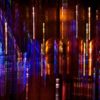
“The Museum as a Constructed, Performative Space” – Mavi Irmak Karademirler
Sarah Bay Cheng’s talk “Everybody’s Historiography: History, Performance, and Playing the Digital in Museum” pointed out to several ways of approaching the digital history, which could be examined around a performance spectrum. Drawing mainly from her experience in the POLIN Museum in Warsaw, Bay-Cheng highlighted some of the critical issues arise with the digitisation of…
Read more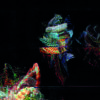
“The authenticity of documents and strawberry flavour.” – Jose Hopkins Brocq
When reflecting upon the potentials of mixed realities, we can’t avoid wondering about the possibilities and implications it may have; not only in our relationship to the world but also how the world will react and change. Shifting our gaze beyond ourselves into non-human rhythms and languages could bring into appearance a series of alien…
Read more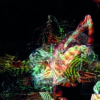
“An interactive approach to history” – Gido Broers
Sarah Bay-Cheng, who is an excellent speaker, explained in her seminar “Everybody’s Historiography: When Museums Play Digital Games” how museums nowadays use digital and interactive elements in their exhibitions to make the visitor more than just a passive voyeur who perceives a representation of a certain historical event ‘as it is’. Instead, the visitor is…
Read more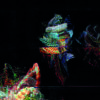
“The Museum between the Physical and the Virtual” – Dennis Jansen
One of the major themes in Sarah Bay-Cheng’s recent lecture on “History, Performance, and Playing the Digital in Museums” was the use of mixed reality in modern museums; that is, the blending of physical artefacts and set pieces with digital interfaces, screens and games. She argued that, as museums engage increasingly often with digital technologies,…
Read more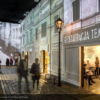
“Walking Through The Jewish Street: A Digital Co-Creation Of history (ies)” – Laura Jimenez Rojas
Nowadays museums are exploring new ways of communication. Digital technologies are opening new paths of experiences within museum spaces. Interactivity and multidirectional participation are being enhanced by the incorporation of digital technologies. As technologies change, so should the practices around them. Sarah Bay-Cheng invited us to see a new perspective on the relationship amongst museums,…
Read more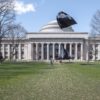
“Experience is an Ongoing Testing” – Laura Jimenez Rojas
What does it mean to go beyond representation when we think about atmosphere? Is not atmosphere a “celestial body” composed of nitrogen, oxygen and argon as described by science? Derek McCormack invited us to think of atmosphere beyond this scientific approach to nature. He invited us to think of atmosphere as an elemental medium to be experienced,…
Read more
“On Game Controllers, and the Magic Circle as an Atmosphere” – Dennis Jansen
When we engage with/in games, there emerges a certain atmosphere around us: a bounded area in which gameplay occurs, a space of ludic ritual wherein the fiction of the game is the dominant framework for meaning-making, a “magic circle” (Salen and Zimmerman 2003, 95). Specifically for digital games, this metaphoric space is constituted by the…
Read more
“Our Fascination with Atmosphere” – Mavi Irmak Karademirler
The concept of atmosphere carries a wide range of possibilities within itself despite being difficult to define or analyse in a text. It is a house for the material and the immaterial, visible and the invisible, finite and infinite. Atmosphere circulates, moves, changes surrounds us with despite efforts to capture it. It exposes our obsession…
Read more
Transmission in Motion Seminar: “Experiment/Experience” ( 2018- 2019 )
Experiment/Experience “Have we forgotten experience?” wonders Scott Lash (Experience, 2018). If this is so, we are currently witnessing a comeback with a vengeance. New forms of research and communication explore and experiment with various dimensions of experience. Art and science meet in experimental approaches that foreground sensation, substance and practice. Technological developments “expand the sensible”…
Read more
“Episteme? Doxa? Or something in between…” – Elissavet Kardami
John McKenzie and Aneta Stonic’s performance lecture was an introduction to the notion of thought action figures. This new concept was initially contextualized by presenting two different types of knowledge: episteme and doxa. John McKenzie located the origins of epistemic knowledge in Plato’s metaphysical idealism, where the process of abstraction can offer access to a…
Read more
